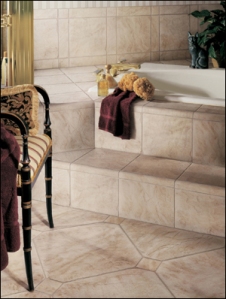 The most important step in caring for your carpet is vacuuming it thoroughly and frequently. This is particularly true in high-traffic areas. Walking on soiled carpet allows the soil particles to work their way below the surface of the pile where they are far more difficult to remove and can damage the carpet fibers. Frequent vacuuming removes these particles from the surface before problems occur.
The most important step in caring for your carpet is vacuuming it thoroughly and frequently. This is particularly true in high-traffic areas. Walking on soiled carpet allows the soil particles to work their way below the surface of the pile where they are far more difficult to remove and can damage the carpet fibers. Frequent vacuuming removes these particles from the surface before problems occur.
For rooms with light traffic, vacuum the carpet traffic lanes twice weekly and the entire area once weekly. In areas with heavy traffic, vacuum the carpet traffic lanes daily and the entire area twice weekly. Up to three passes of the machine will suffice for light soiling, but five to seven passes are necessary for heavily soiled areas. Change the vacuuming direction occasionally to help stand the pile upright and reduce matting.
Extend the life of your carpet with a quality vacuum
An inexpensive machine may remove surface dirt but will not effectively remove the hidden dirt and particles embedded in the pile. Invest in a good vacuum cleaner to get the dirt you can’t see and prolong the beauty and life of your carpet. To ensure that your vacuum will conform to the highest industry standards, make sure that your vacuum cleaner is certified through the Carpet and Rug Institute (CRI) Seal of Approval/Green Label Vacuum Cleaner Program. Visit www.carpet-rug.org for details.
Select the best vacuum for your type of carpet
Shaw Floors recommends using vacuums with a rotating brush or combination beater/brush bar that agitates the carpet pile and mechanically loosens soil for removal. Carpet with thick loop pile construction, particularly wool and wool-blend styles, may be sensitive to brushing or rubbing of the pile surface and may become fuzzy. In addition, shag (or cabled) styles with long pile yarns tend to wrap around the rotating brushes causing damage to the yarn. For these products, Shaw recommends a suction-only vacuum or a vacuum with an adjustable brush lifted away from the carpet so it does not agitate the pile. Be sure to test a vacuum with a beater/brush bar in an inconspicuous location before regular use, to make sure it doesn’t produce excessive fuzzing.
Source: Shaw Floors



